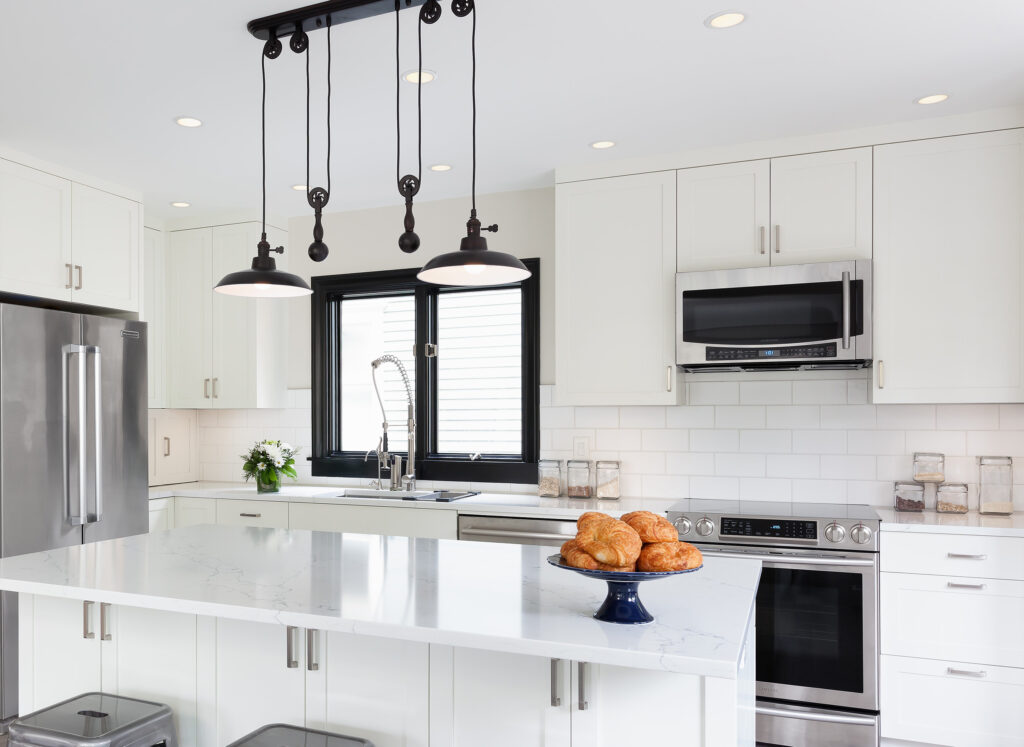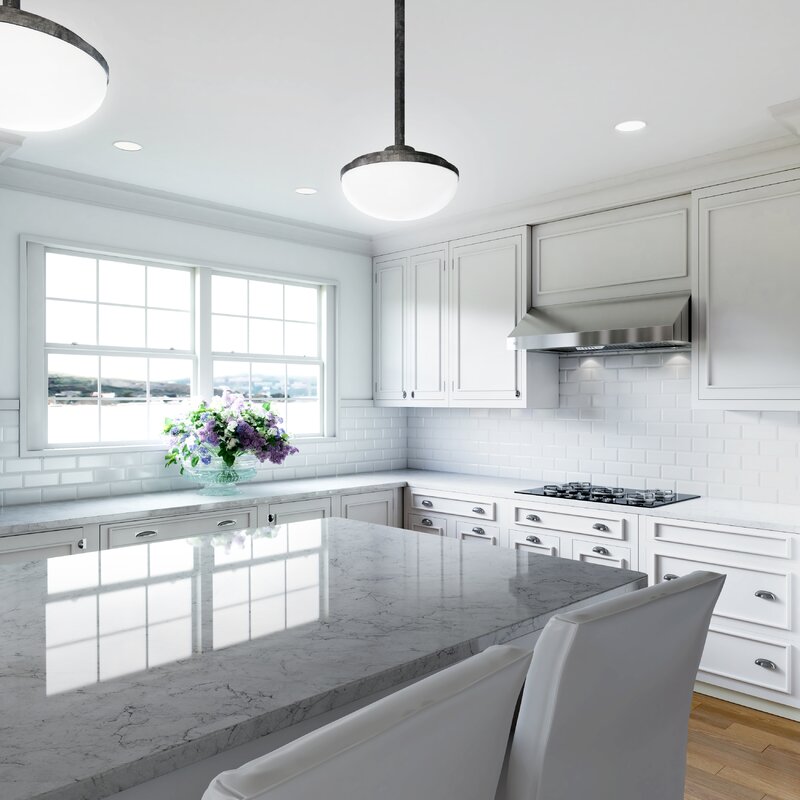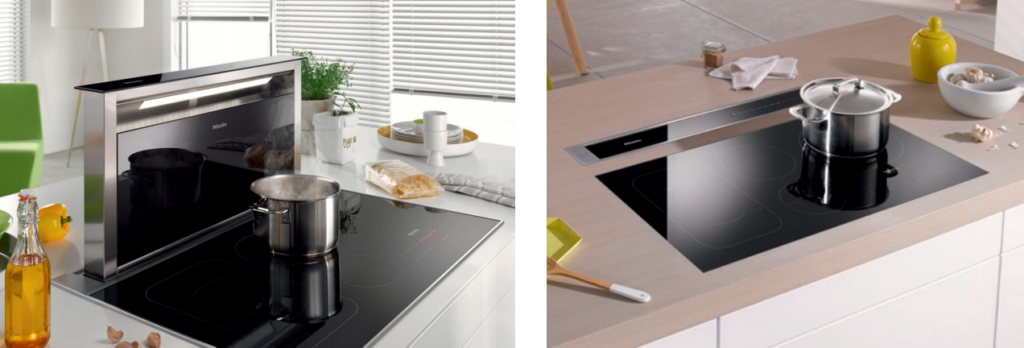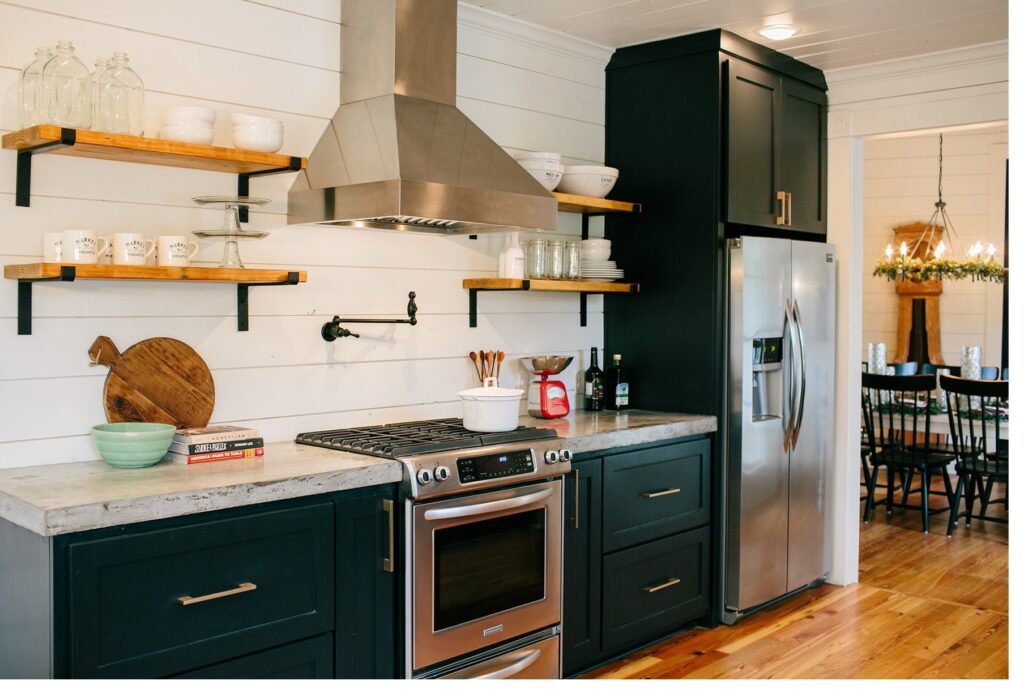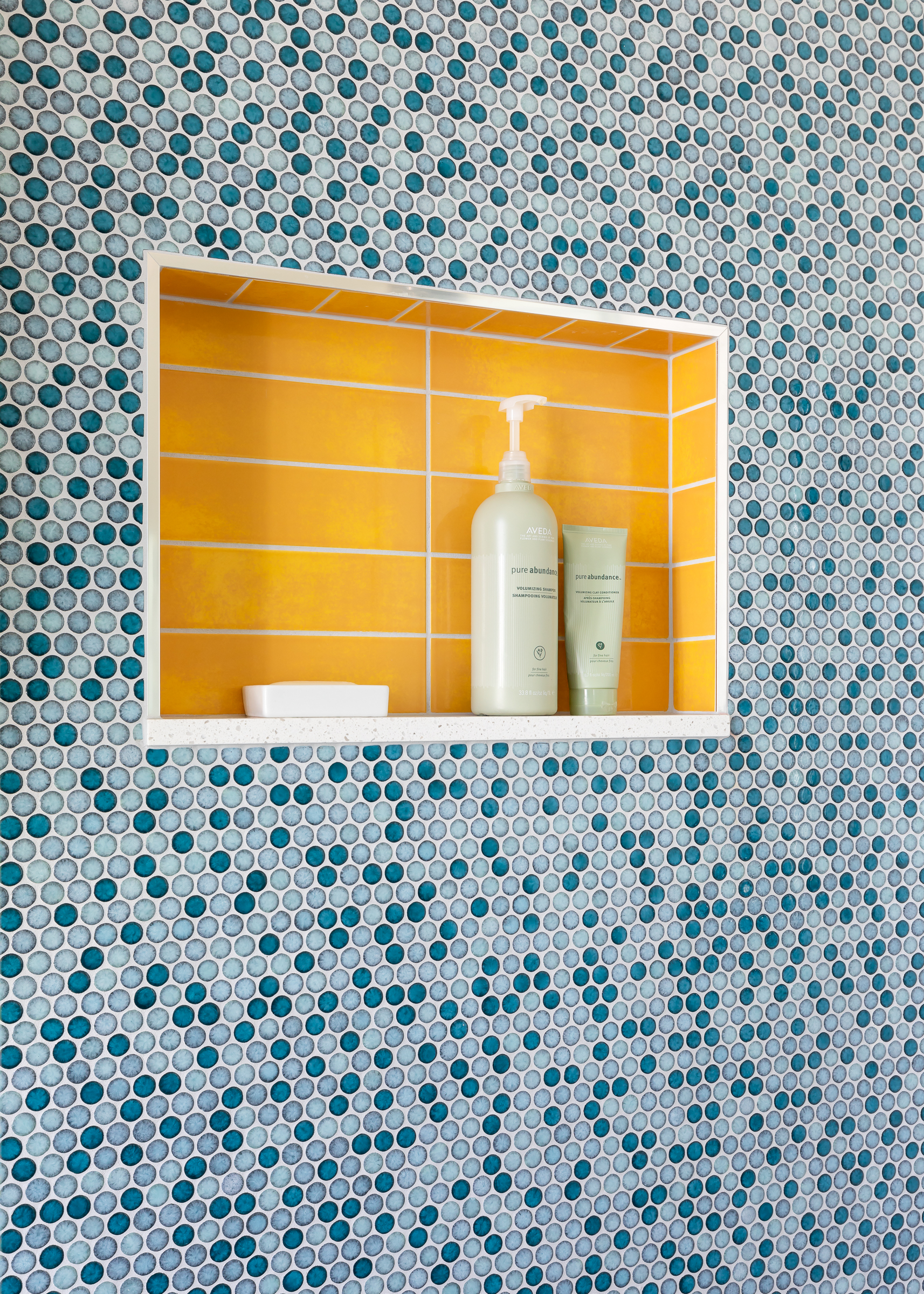What Vent Hood Should You Get?
What Vent Hood Should You Get?

Eager to get happy at home right now?
Get 10 tips for a happier home!
A vent hood’s job is to collect grease, moisture, and cooking odors, and vent them out of your home, but not all hoods perform equally. That means the style of vent hood you choose needs to align not only with your budget and aesthetic vision but also the performance you need for the type of cooking you do and the kind of range or cooktop you have.
In this post, we’ll help clarify the pros and cons of different hood styles so you can choose what is best for you!
We’ll cover:
• Over the range microwave-hood combinations (OTRs)
• Under-cabinet vent hoods
• Pop-up and downdraft vents
• Flush-mount ceiling vents
• Wall-mounted chimney vents
• Island vent hoods
• Insert vent hoods
![]()
(Performance rating is from 1 – 3 Stars)
Over the Range Microwave (also referred to as an OTR)
Cost: $-$$
Performance: ⭐
Overview: An over-the-range microwave combines a microwave with a range hood. They can be set to vent out of the home or recirculate through a filter.
Pros: Budget-friendly and the dual functionality frees up counter space, great for small kitchens.
Cons: Not very efficient. May be harder to reach for shorter people or kids. Hard to view food being prepared. You always need to be *extra* careful when pulling out hot items from up high (especially not good if you have smaller children). Also, our colleague Dan with Metropolitan Appliance in Seattle says that over-the-range microwaves aren’t really appropriate for use over a gas cooking surface, confirmed by Damian of Damian John Installations who points out that the CFM (cubic foot per minute) flow of air isn’t as high as with a dedicated hood. And if the microwave is installed 12-13 inches over a gas range (a common height for OTRs so you aren’t reaching up too high to grab your food) you could actually melt the underside of the microwave!
A Seriously Happy Homes kitchen remodel: This kitchen had a small footprint to start and while we couldn’t add more square footage, we were able to add the dual functionality of an over-the-range microwave giving them more countertop space.
Under-Cabinet Vent Hood
Cost: $-$$$
Performance: ⭐⭐ to ⭐⭐⭐
Overview: This common style of hood installs under a cabinet above your range or cooktop. Compact and often budget-friendly, they come in a variety of finishes and sizes. You can choose from a ducted option (which vents the air out of your home) or ductless (which recirculates “clean” (filtered) air back into your kitchen). Keep in mind a ductless option is best if you do not cook often, and are not cooking high heat/odor foods, and is *not* a good idea if you cook with gas.
Pros: Economical, easy to install.
Cons: Need to clean or replace filter regularly *especially* if non-ducted. And it might seem like you’ll get more storage out of the cabinet over the hood, but remember the ducting will run through that upper cabinet, so it doesn’t provide much extra storage.
Pop-Up and Downdraft Ventilation
Cost: $$-$$$$
Performance: ⭐ to ⭐⭐
Overview: Pop-up vents are installed behind your cooktop or range and stay out of site until needed – very attractive to folks who want a clear view over their cooking area. You just push a button and a pop-up vent (also called a telescopic downdraft vent) rises about 8-18 inches (depending on the model), pulling the grease, moisture and cooking odors downward through ducting in the floor to the outside. Downdraft ranges work the same way, but the vent is built right into the range instead of popping up behind the range or cooktop.
Pros: Great option for islands, minimally invasive, open site lines, do not sacrifice upper cabinetry.
Cons: These vents are the least efficient when it comes to venting smells and grease from your home because they are fighting the laws of physics (as you know, heat likes to *rise*). Also, while most cooktop and pop-up combinations will fit in a standard 24” deep cabinet, there are some models that require extra room under the cabinet range hood or behind the cooktop, for installation. If you are trying to put a pop-up behind a full-size range, you will need 27-30” of cabinet depth and the fan motor will be located in an adjacent cabinet (reducing storage) or in a crawl space… as you can see it can get complicated, so always check the installation specifications, and consider consulting with a professional appliance installation company!
Flush Mount
Cost: $$$-$$$$
Performance: ⭐⭐
Overview: Another option for folks who don’t want anything hanging down over their range or cooktop, these vents sit between the ceiling joists, flush with the ceiling. Installed 54-60” above the cooktop, there needs to be up to 15” of height inside the floor joists or attic space to hide the fan and ducting, so make sure you have that space available in the level above the kitchen. If you have an attic above your kitchen you’ll have adequate space, but in standard homes, there is rarely enough space between floors. If your ceilings are particularly high you can create a soffit box or drop the ceilings just enough to accommodate the housing.
Pros: Streamlined, open sightlines.
Cons: Hard to reach filters, not quite as efficient since the steam and fumes have more time to dissipate before being gathered and vented out (though at least it’s working *with* the laws of physics).
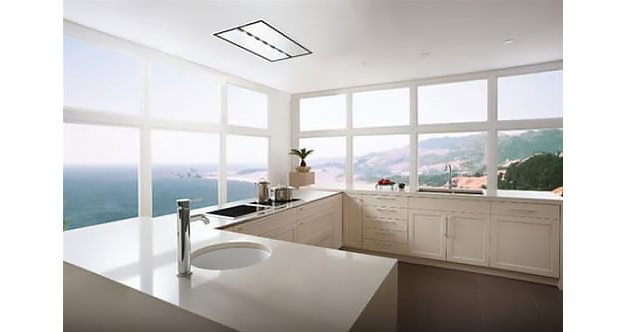
A flush mount hood recessed into the ceiling lets you enjoy those amazing views! Just remember that if you have a window right behind your range you’ll be cleaning grease off the glass pretty regularly – the vent hood won’t save you from splatters!
Wall Mounted Range Hood
Cost: $$-$$$$
Performance: ⭐⭐⭐
Overview: This common style of hood mounts to your wall with an exposed chimney duct that vents to the outside. It’s already one of the most effective vent styles, but if you want to maximize the effectiveness choose a curved shape or one with a deep cavity to effectively capture the smoke and fumes as they rise, and choose a hood that is 6” wider than your cooktop.
Pros: Wide variety of styles, and the most effective since it sits above – and closest to – your cooktop.
Cons: Loss of cabinetry above your range, and you’ll need to decide if the tile continues up the wall behind the chimney duct, and how it visually connects to your upper cabinetry.
In this kitchen design, Joanna Gaines flanked a wall-mounted range hood with open shelves. Bear in mind that you’ll want to be disciplined about using your vent or the dishes on the shelves flanking the hood will get greasy very quickly!
Island Hood
Cost: $$$-$$$$
Performance: ⭐⭐ – ⭐⭐⭐ (depending on installation)
Overview: This style of hood is (obviously) meant for installing over an island, and mounts and vents through joists in the ceiling. Because there are no side cabinets to help channel fumes, purchase a hood that is at least 6” larger than your cooktop to maximize effectiveness.
Pros: Great option for island or peninsula kitchen layouts, much more effective than a pop-up or downdraft vent.
Cons: No side cabinet to channel fumes, and it disrupts sightlines, but this hood is an opportunity for something special.
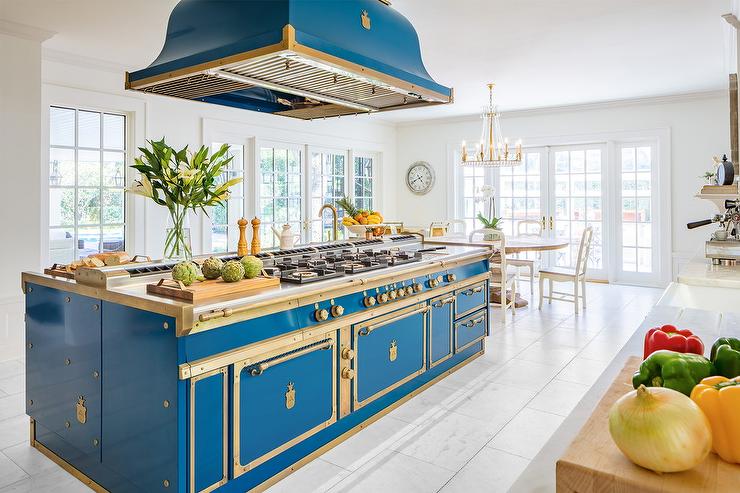
This is not what I had in mind when finding an image to represent an island hood but WOW! This is the king of hoods!
Insert / Custom Range Hood
Cost: $$$$
Performance: ⭐⭐⭐
Overview: If you’ve been eyeing some of those gorgeous custom hood vents made of copper or that match the custom cabinetry, then you’ve actually been eyeing a custom hood cover and vent insert. The insert is a utilitarian system that fits inside a custom-built enclosure, letting you choose exactly what your kitchen ventilation looks like.
Pros: Customize the look you want – the possibilities are endless!
Cons: The insert itself is not usually that expensive, but you’ll pay up for that custom-built enclosure! Be sure to work closely with *both* your cabinet maker and vent manufacturer/fabricator. Your cabinet-maker MUST know the specifications of the vent you’ll be using in order to build it correctly!!
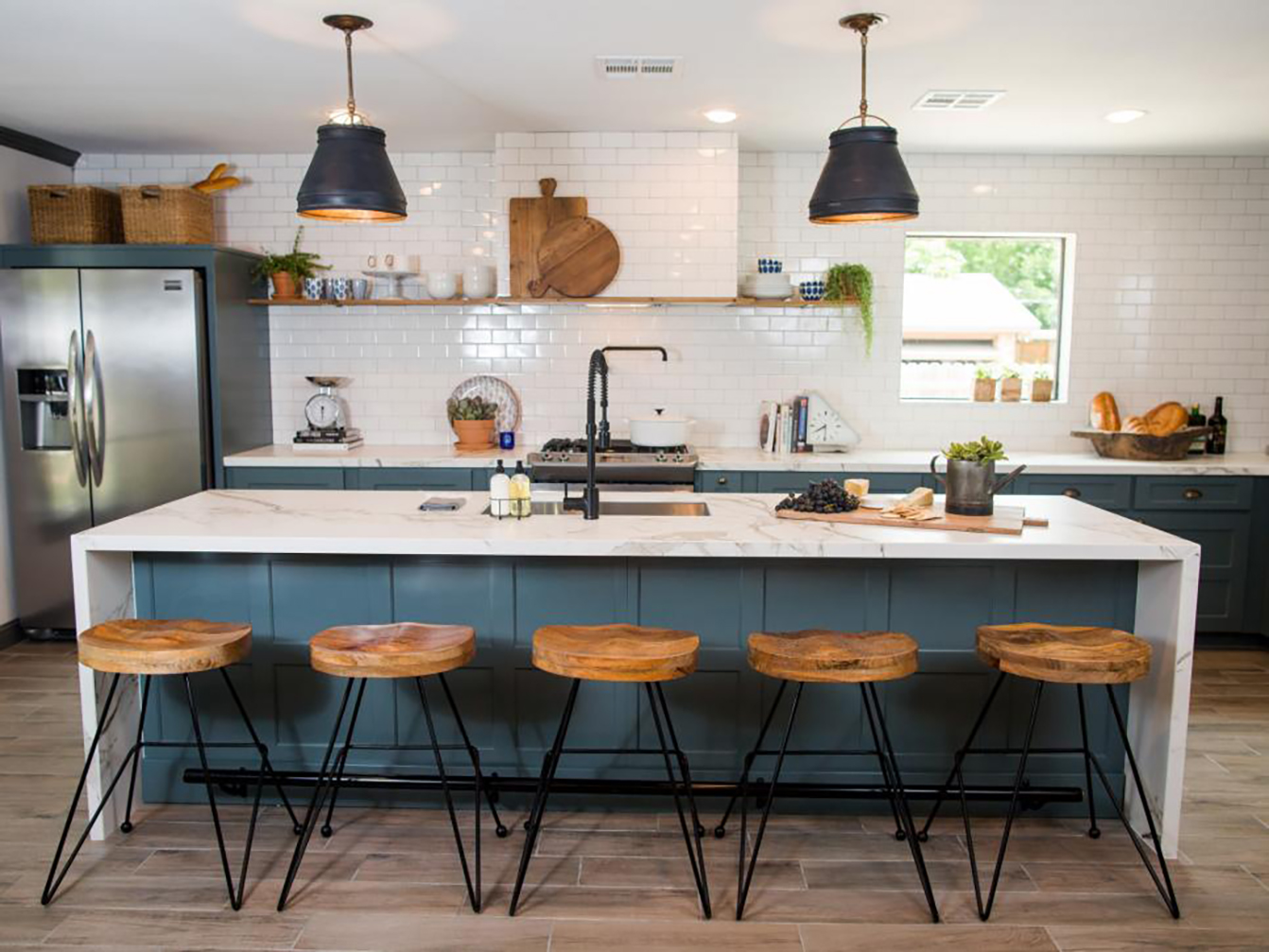
Check out this disappearing act! Clad in subway tile, the hood blends in seamlessly with the subway tile backsplash.
Important! In addition to having to run proper ducting and electrical for your new hood, if it pulls 400 CFM or more of air, then the building code in Washington State say that you MUST have “make-up” air. “Make-up” air is meant to replace the air that is pulled out through the vent hood so you don’t build up unhealthy air or create a vacuum in your home. These make-up air systems can double the cost of your install, so be sure to chat about that with your appliance installer to make sure you’re accounting for hidden install costs and requirements.
There you have it! I hope this helps make shopping for your hood vent a little easier!
If you get stuck when shopping for your next hood in the Seattle/Puget Sound area, be sure to chat with Dan and the sales team at Metropolitan Appliance or the installation team at Damian John Installations. We couldn’t have written this post without their very helpful knowledge, and they’re eager to answer all your ventilation and hood questions!
If you’re remodeling your kitchen and would like some further inspiration- check out this blog on what to consider when planning an IKEA kitchen. And as always, if you need more assistance with your vent hood, schedule a Design Helpline to talk with a design pro about your project! We’d love to help.
May your home always be happy!

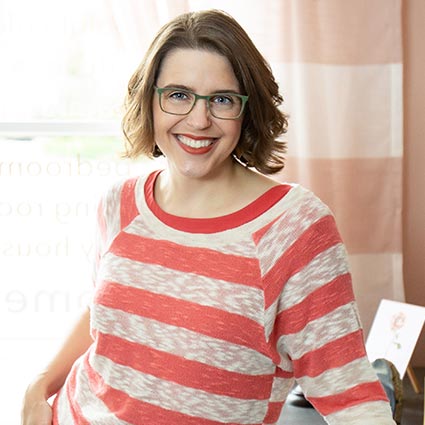
HI, I'M REBECCA WEST!
I’m an interior designer, author, podcaster, speaker, and coach to other designers. (Whew!) But I’m not your classic interior designer because, frankly, I don’t care if you buy a new sofa. I do care if your home supports your goals and feels like “you.” Remember, happy starts at home!
More From Seriously Happy Homes
Are you ready for a seriously happy home?
(Cue the confetti!)

Eager to get happy at home right now?

